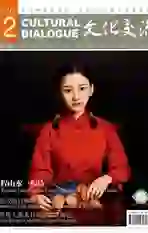嵩溪村的诗社
2020-12-28傅淑青
傅淑青

千年古村落嵩溪,位于浙江省浦江县白马镇西北角的鸡冠岩山麓下,历来被人誉为“小杭州”。初一见,深感震撼、欢喜。那是7年前燥热的盛夏之夜,我应诗友邀请,来此小游。虽是夜晚,但古村落的独特魅力并未被苍茫夜色所遮掩,反而在这件黑色大衣的笼罩下越发显得神秘。
这个自古就有浓郁文化氛围的地方,最让我念念不忘的不是青山环绕、碧水盈盈的秀丽风光,不是那蜿蜿蜒蜒、千折百转的幽深小巷,也不是青砖黑瓦马头墙、天井回廊雕花窗的成片古建筑,而是有300多年历史、曾名噪一时的嵩溪学社。
来过,便不曾离开。此后无数个寻常日子,我一趟趟往嵩溪跑,一次次翻阅与嵩溪学社有关的资料。哪怕只查找到与之相关的只言片语,我都会像享受饕餮大餐一样细细咀嚼。
一
嵩溪人素来热爱传统文化,农忙时朝耕暮耘、拽耙扶犁,闲暇时研经读史、舞文弄墨。自宋代起,嵩溪就涌现出一批工诗文、善书画的文人雅士。明朝初年,就有嵩溪先贤与各地群贤酬诗题赠的记载(见《浦阳嵩溪邵氏族谱》)。追根溯源,许是四面环山、峰峦叠翠、草木繁盛的自然景观,点燃了嵩溪先贤的灵感,激发了创作的欲望。
清康熙三十二年(1693年),嵩溪学者徐敬臣创建了“嵩溪诗社”(嵩溪学社的前身),与村中志同道合的诗友和各地的能诗善画者相互唱和、切磋诗艺、议论时弊,留下了大量反映时代风貌的诗作和画作。嵩溪诗社一度在浙中闻名遐迩。
风流总被雨打风吹去。据《嵩溪村志》记载,清嘉庆二十五年(1820年)农历七月初九,嵩溪突发大火。320余户民居房被大火付之一炬,先人留下的珍贵诗稿就此荡然无存。
历时已有120余年的嵩溪诗社被按下了“暂停键”,但厚重的文化底蕴却遗留了下来,成为了嵩溪人宝贵的精神财富。毫不夸张地说,这是浙江省内最“长寿”的村级诗社,其时间跨度之大在国内也属罕见。
二
1978年改革开放,窝在山坳坳里的嵩溪把握住了机遇,村民们放下锄头,纷纷垒起了土窑,做起了开采矿体、烧制石灰的营生,吸引了省内外大量客商。嵩溪经济最鼎盛时期,村中光三轮拖拉机就有300余辆,涌现了一大批“万元户”,村集体经济最多时达到180余万元,嵩溪村也因此在县内外声名远扬。
有了宽裕的物质生活,嵩溪人又开始追求精神层面的富足。20世纪80年代中期,村里人有了重建嵩溪诗社的打算。
“我是原杭州大学附中(即杭州学军中学前身)毕业的,有一定的文学功底,又喜欢诗词,做了几年村里的图书管理员,在村里也算文化人。村领导找到我,要我和邵继材、徐心庚、徐永诤、徐承松等人一起重建嵩溪诗社。重建目的是什么?如果只是走形式、走過场,没有任何意义。我数次和在省社会科学院工作的乡贤徐儒宗通信商议,并向别的诗社取经学习。我们最后确定了办诗社的基调:既要‘阳春白雪,也要‘下里巴人;既要壮大诗词书画,也要发展剪纸、摄影、昆曲、道情等艺术品类,要让每个社员都有选择的余地。只有这样,才能吸引村民参与进来。”嵩溪学社前任社长、农民诗人徐千意回忆。
1986年端午节,嵩溪诗社正式更名为嵩溪学社,并制定了详尽的《社约》。《社约》确定了学社的性质,“自愿结合的业余学习文化知识的群众性社团组织”;学社对社员的要求是“以自学为主,持之以恒,师友间自由探讨交流,互相学习,共同进步”;学社不设门槛,不论男女老少、不论水平高低、不论文化程度,“凡村民之爱好文史、诗词、书画、科技等各种文化知识者,均可申请入社”,且不向社员收取任何活动经费。
1988年端午节,浙江省诗词学会在杭州举行成立大会,嵩溪学社应邀派代表参加,成为浙江省诗词学会唯一的村级团体会员。
三
一个古老的村级诗社,营造了嵩溪村浓郁的文化氛围,滋养了一代又一代人。
不论耄耋老者,还是垂髫小儿,每个嵩溪人似乎都充满艺术细胞。在日光熹微的清晨和星月倾泻的夜晚,在嵩溪漫步,总能遇见三五成群的文艺爱好者聚集在一起,静寂的时光被他们赋予了更多的意义。
经过30多年的发展,嵩溪学社吸纳的社员已有百余位之多。其中,国家级会员3人,省级会员9人。
诗词是嵩溪学社历史最为悠久的门类。从2011年起,浦江每年都会筹办一次“农民赛诗会”,这已成为当地一张文化名片,并在江浙一带打出了不小的名气。每届赛诗会嵩溪学社都不曾缺席,激烈角逐的舞台上,每年都有嵩溪农民诗人的身影。
“在我们村,聚在一起的都是喜欢文艺的朋友,吃吃喝喝的很少,基本都在讨论诗词与书画,谈论这幅画的布局、这首诗的韵味。也有人说我们村都是一帮‘书呆子,我们从不解释,那种精神上的愉悦与心灵上的满足,用语言是表达不清楚的。”学社副社长兼秘书长邵陆甫说得极其诚恳。
四
邵崇星生长于嵩溪的一个普通农家,父母虽是没念过多少书的农民,但受村里大环境的影响,他们仍支持孩子学习书法和国画。直到现在,嵩溪村民仍把传统文化当作精神图腾,仍会大力鼓励下一代研习。这样的自发传承,在当地是一种时尚和风尚。
除了父母的有意培育,嵩溪学社针对中小学生也有一系列培养举措。每年暑假,村里都会举办免费夏令营。从2019年起,在邵陆甫的牵头组织下,学社开设了周末课堂,免费培训硬笔书法、毛笔书法、国画等,受到中小学生的普遍欢迎。
另外,为激发后学,传承传统,嵩溪学社还会不定期举行诗词讲座,并邀请县内外诗书画名家进村授课,村里的诗词爱好者都可以参加。除此,还开展了不少“请进来、走出去”的活动,例如每年春节、重阳,在村内举办大型诗书画展,邀请省内外文化学者前来点评;与县内外诗社共同交流创作心得;与县美术家协会举办联展;筹办各类采风活动……
“学社即将进行换届选举,目的就是提高队伍的凝聚力和向心力,继续提升嵩溪学社的美誉度和知名度。相信在所有社员的齐心协力下,嵩溪学社定能焕发新生机和新活力。”邵陆甫说。
由于年代久遠,关于“嵩溪诗社”的记载并不多,我们只能通过《浦江县志》《嵩溪村志》等书卷中的寥寥数语,遥想嵩溪前辈先贤的用心歌咏。好在嵩溪人仍在发扬和传承“嵩溪诗社”的遗风,这是嵩溪最美丽、最风雅、最动人的风景。
Songxi, a village nestled at the foot of Cockscomb Rock Mountain in the northwest of White Horse Town in Pujiang, is traditionally known as Little Hangzhou. Seven years ago I first visited the village of more than 1,000 years. I was deeply impressed by Songxi Poetry Society, which was founded in 1693 and made a reputation in the literary circles back in the Qing Dynasty (1644-1911). Since then I have visited Songxi many times, trying to learn more about the poets in the region centuries ago.
I think Songxi Poetry Society is probably the most ancient and yet still-alive village-level poetry organization in China. The people of Songxi followed a tradition of farming and culturing themselves to be artists, poets and government officials. The way of life was a social norm in the rural and feudal China. From the Song Dynasty (960-1279) on, some Songxi locals made their names into history as poets, painters, calligraphers. According to a clan history book, some celebrated poets of Songxi met with poets from other places and they happily compared notes with each other. The picturesque rural scenes around Songxi inspired local poets.
So it was only a matter of time for a poetry society to appear in Songxi. Quite a number of poems composed by members of the society have come down to history. The society made a reputation in central Zhejiang.
The biggest blow the society had was a fire on the ninth day of the seventh month on the lunar calendar in 1820. The conflagration burned down all the 320 houses in the village and, in particular, destroyed all the manuscripts of poems.
The society made a comeback in the last years of the Qing (1644-1911) and it survived in the first decades of the 20th century. But its influence was negligible.
The poetry societys renaissance was made possible by Chinas modernization drive in the late 1970s. Residents of Songxi engaged in business and the village became reputed for its economic prosperity. In the 1980s, someone in the village thought of the poetry society in history and planned to bring it back.
In May 1986, the society was officially brought back and was called Songxi Cultural Studies Society. Of course, its members included some rural poets and painters and calligraphers. In 1988, the society sent some representatives to attend the founding ceremony of Zhejiang Poetry Society. The Songxi Cultural Studies Society became the only village-level member of the provincial organization.
The village society has enjoyed a widespread reputation since Pujiang County started a poetry competition for rural residents in 2011. The annual event has attracted poets from all over the county. Songxi village has produced quite a few winners.
Producing winners at the county competition is only part of the things the Society does. It holds lectures on poetry frequently. It invites painters and calligraphers to conduct study courses at the village. In summer, village artists and calligraphers hold a summer camp and teach youngsters. During the Spring Festival and the Duanwu Festival, the society hosts an exhibition featuring works by village poets, painters, and calligraphers; masters from outside are invited to review exhibits and provide suggestions and advices. The society holds regular events in partnership with other poetry societies. Now and then, the society and the countys artists association host exhibitions jointly.
In the eyes of some outsiders, Songxi is a village of bookworms. “We dont bother to explain. The spiritual joy and contentment resulted from art and poetry are beyond words,” says Shao Lufu, vice president and secretary general of the society.
